Akbar Karimi
IMP Lab, Department of Engineering and Architecture, University of Parma, Parma, Italy
ArithmAttack: Evaluating Robustness of LLMs to Noisy Context in Math Problem Solving
Jan 14, 2025



Abstract:While Large Language Models (LLMs) have shown impressive capabilities in math problem-solving tasks, their robustness to noisy inputs is not well-studied. In this work, we propose ArithmAttack to examine how robust the LLMs are when they encounter noisy prompts that contain extra noise in the form of punctuation marks. While being easy to implement, ArithmAttack does not cause any information loss since words are not added or deleted from the context. We evaluate the robustness of seven LLMs, including LLama3, Mistral, and Mathstral, on noisy GSM8K and MultiArith datasets. Our experiments suggest that all the studied models show vulnerability to such noise, with more noise leading to poorer performances.
Exploring Robustness of Multilingual LLMs on Real-World Noisy Data
Jan 14, 2025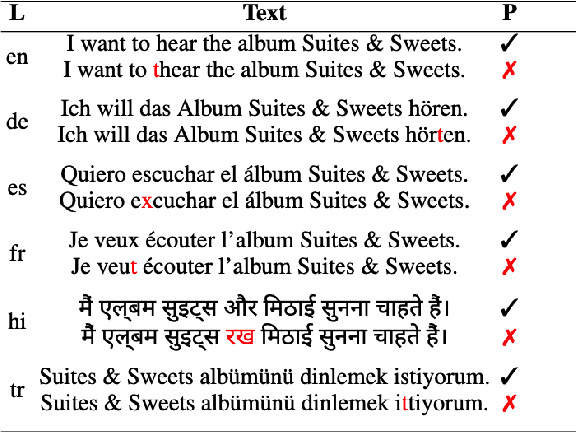
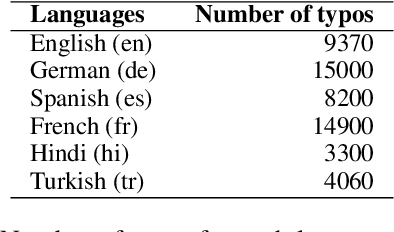
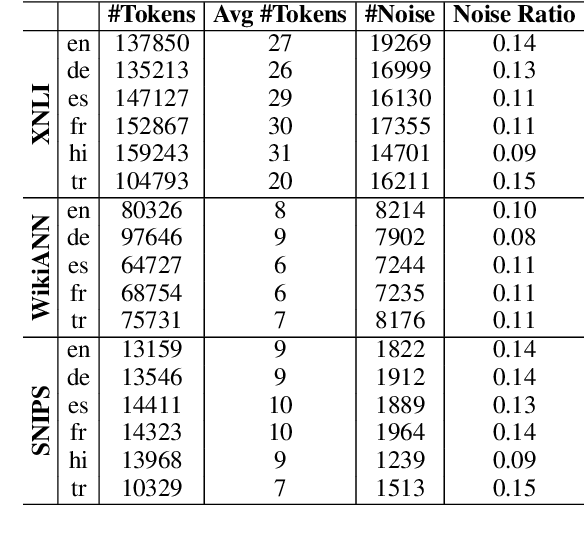
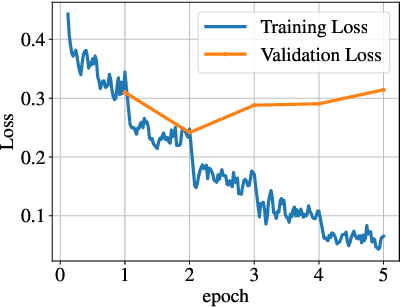
Abstract:Large Language Models (LLMs) are trained on Web data that might contain spelling errors made by humans. But do they become robust to similar real-world noise? In this paper, we investigate the effect of real-world spelling mistakes on the performance of 9 language models, with parameters ranging from 0.2B to 13B, in 3 different NLP tasks, namely Natural Language Inference (NLI), Name Entity Recognition (NER), and Intent Classification (IC). We perform our experiments on 6 different languages and build a dictionary of real-world noise for them using the Wikipedia edit history. We show that the performance gap of the studied models on the clean and noisy test data averaged across all the datasets and languages ranges from 2.3 to 4.3 absolute percentage points. In addition, mT5 models, in general, show more robustness compared to BLOOM, Falcon, and BERT-like models. In particular, mT5 (13B), was the most robust on average overall, across the 3 tasks, and in 4 of the 6 languages.
Exploring Robustness of LLMs to Sociodemographically-Conditioned Paraphrasing
Jan 14, 2025Abstract:Large Language Models (LLMs) have shown impressive performance in various NLP tasks. However, there are concerns about their reliability in different domains of linguistic variations. Many works have proposed robustness evaluation measures for local adversarial attacks, but we need globally robust models unbiased to different language styles. We take a broader approach to explore a wider range of variations across sociodemographic dimensions to perform structured reliability tests on the reasoning capacity of language models. We extend the SocialIQA dataset to create diverse paraphrased sets conditioned on sociodemographic styles. The assessment aims to provide a deeper understanding of LLMs in (a) their capability of generating demographic paraphrases with engineered prompts and (b) their reasoning capabilities in real-world, complex language scenarios. We also explore measures such as perplexity, explainability, and ATOMIC performance of paraphrases for fine-grained reliability analysis of LLMs on these sets. We find that demographic-specific paraphrasing significantly impacts the performance of language models, indicating that the subtleties of language variations remain a significant challenge. The code and dataset will be made available for reproducibility and future research.
Enforcing Fundamental Relations via Adversarial Attacks on Input Parameter Correlations
Jan 09, 2025Abstract:Correlations between input parameters play a crucial role in many scientific classification tasks, since these are often related to fundamental laws of nature. For example, in high energy physics, one of the common deep learning use-cases is the classification of signal and background processes in particle collisions. In many such cases, the fundamental principles of the correlations between observables are often better understood than the actual distributions of the observables themselves. In this work, we present a new adversarial attack algorithm called Random Distribution Shuffle Attack (RDSA), emphasizing the correlations between observables in the network rather than individual feature characteristics. Correct application of the proposed novel attack can result in a significant improvement in classification performance - particularly in the context of data augmentation - when using the generated adversaries within adversarial training. Given that correlations between input features are also crucial in many other disciplines. We demonstrate the RDSA effectiveness on six classification tasks, including two particle collision challenges (using CERN Open Data), hand-written digit recognition (MNIST784), human activity recognition (HAR), weather forecasting (Rain in Australia), and ICU patient mortality (MIMIC-IV), demonstrating a general use case beyond fundamental physics for this new type of adversarial attack algorithms.
Do Multilingual Large Language Models Mitigate Stereotype Bias?
Jul 09, 2024



Abstract:While preliminary findings indicate that multilingual LLMs exhibit reduced bias compared to monolingual ones, a comprehensive understanding of the effect of multilingual training on bias mitigation, is lacking. This study addresses this gap by systematically training six LLMs of identical size (2.6B parameters) and architecture: five monolingual models (English, German, French, Italian, and Spanish) and one multilingual model trained on an equal distribution of data across these languages, all using publicly available data. To ensure robust evaluation, standard bias benchmarks were automatically translated into the five target languages and verified for both translation quality and bias preservation by human annotators. Our results consistently demonstrate that multilingual training effectively mitigates bias. Moreover, we observe that multilingual models achieve not only lower bias but also superior prediction accuracy when compared to monolingual models with the same amount of training data, model architecture, and size.
Self-Balanced R-CNN for Instance Segmentation
Apr 25, 2024



Abstract:Current state-of-the-art two-stage models on instance segmentation task suffer from several types of imbalances. In this paper, we address the Intersection over the Union (IoU) distribution imbalance of positive input Regions of Interest (RoIs) during the training of the second stage. Our Self-Balanced R-CNN (SBR-CNN), an evolved version of the Hybrid Task Cascade (HTC) model, brings brand new loop mechanisms of bounding box and mask refinements. With an improved Generic RoI Extraction (GRoIE), we also address the feature-level imbalance at the Feature Pyramid Network (FPN) level, originated by a non-uniform integration between low- and high-level features from the backbone layers. In addition, the redesign of the architecture heads toward a fully convolutional approach with FCC further reduces the number of parameters and obtains more clues to the connection between the task to solve and the layers used. Moreover, our SBR-CNN model shows the same or even better improvements if adopted in conjunction with other state-of-the-art models. In fact, with a lightweight ResNet-50 as backbone, evaluated on COCO minival 2017 dataset, our model reaches 45.3% and 41.5% AP for object detection and instance segmentation, with 12 epochs and without extra tricks. The code is available at https://github.com/IMPLabUniPr/mmdetection/tree/sbr_cnn
CAISA at SemEval-2023 Task 8: Counterfactual Data Augmentation for Mitigating Class Imbalance in Causal Claim Identification
Jun 01, 2023



Abstract:The class imbalance problem can cause machine learning models to produce an undesirable performance on the minority class as well as the whole dataset. Using data augmentation techniques to increase the number of samples is one way to tackle this problem. We introduce a novel counterfactual data augmentation by verb replacement for the identification of medical claims. In addition, we investigate the impact of this method and compare it with 3 other data augmentation techniques, showing that the proposed method can result in a significant (relative) improvement in the minority class.
Improving Localization for Semi-Supervised Object Detection
Jun 21, 2022Abstract:Nowadays, Semi-Supervised Object Detection (SSOD) is a hot topic, since, while it is rather easy to collect images for creating a new dataset, labeling them is still an expensive and time-consuming task. One of the successful methods to take advantage of raw images on a Semi-Supervised Learning (SSL) setting is the Mean Teacher technique, where the operations of pseudo-labeling by the Teacher and the Knowledge Transfer from the Student to the Teacher take place simultaneously. However, the pseudo-labeling by thresholding is not the best solution since the confidence value is not strictly related to the prediction uncertainty, not permitting to safely filter predictions. In this paper, we introduce an additional classification task for bounding box localization to improve the filtering of the predicted bounding boxes and obtain higher quality on Student training. Furthermore, we empirically prove that bounding box regression on the unsupervised part can equally contribute to the training as much as category classification. Our experiments show that our IL-net (Improving Localization net) increases SSOD performance by 1.14% AP on COCO dataset in limited-annotation regime. The code is available at https://github.com/IMPLabUniPr/unbiased-teacher/tree/ilnet
AEDA: An Easier Data Augmentation Technique for Text Classification
Aug 30, 2021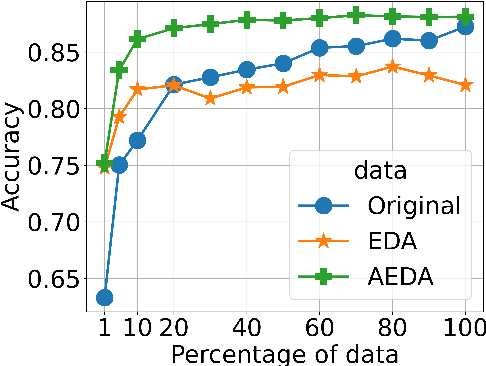
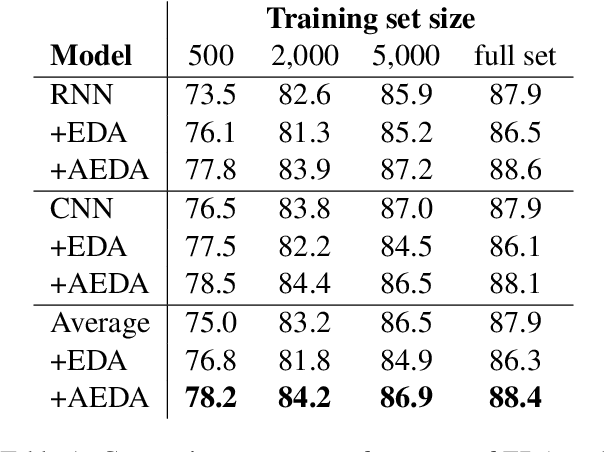

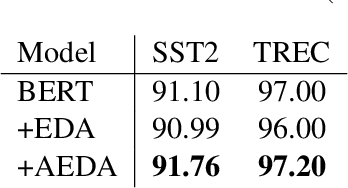
Abstract:This paper proposes AEDA (An Easier Data Augmentation) technique to help improve the performance on text classification tasks. AEDA includes only random insertion of punctuation marks into the original text. This is an easier technique to implement for data augmentation than EDA method (Wei and Zou, 2019) with which we compare our results. In addition, it keeps the order of the words while changing their positions in the sentence leading to a better generalized performance. Furthermore, the deletion operation in EDA can cause loss of information which, in turn, misleads the network, whereas AEDA preserves all the input information. Following the baseline, we perform experiments on five different datasets for text classification. We show that using the AEDA-augmented data for training, the models show superior performance compared to using the EDA-augmented data in all five datasets. The source code is available for further study and reproduction of the results.
UniParma at SemEval-2021 Task 5: Toxic Spans Detection Using CharacterBERT and Bag-of-Words Model
Apr 09, 2021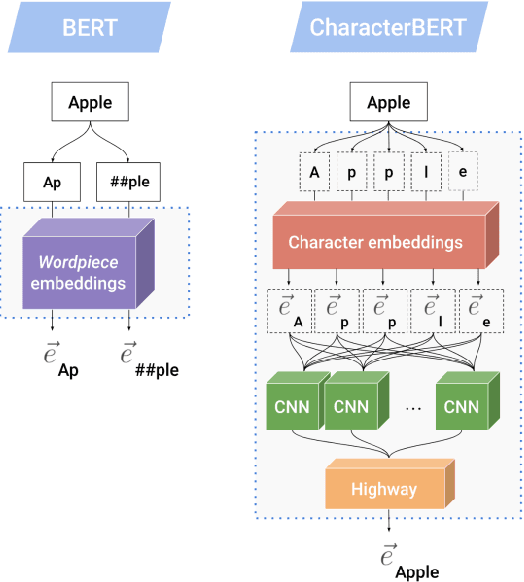
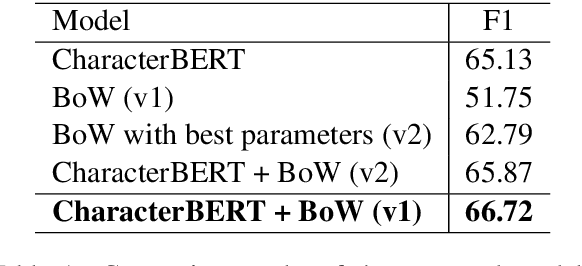
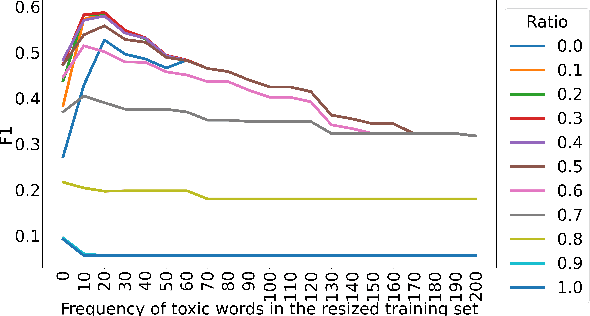
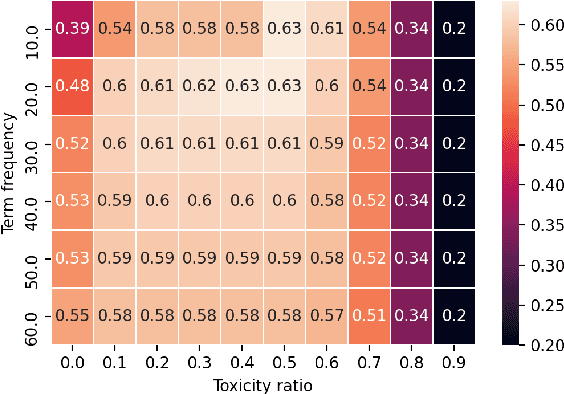
Abstract:With the ever-increasing availability of digital information, toxic content is also on the rise. Therefore, the detection of this type of language is of paramount importance. We tackle this problem utilizing a combination of a state-of-the-art pre-trained language model (CharacterBERT) and a traditional bag-of-words technique. Since the content is full of toxic words that have not been written according to their dictionary spelling, attendance to individual characters is crucial. Therefore, we use CharacterBERT to extract features based on the word characters. It consists of a CharacterCNN module that learns character embeddings from the context. These are, then, fed into the well-known BERT architecture. The bag-of-words method, on the other hand, further improves upon that by making sure that some frequently used toxic words get labeled accordingly. With a 4 percent difference from the first team, our system ranked 36th in the competition. The code is available for further re-search and reproduction of the results.
 Add to Chrome
Add to Chrome Add to Firefox
Add to Firefox Add to Edge
Add to Edge